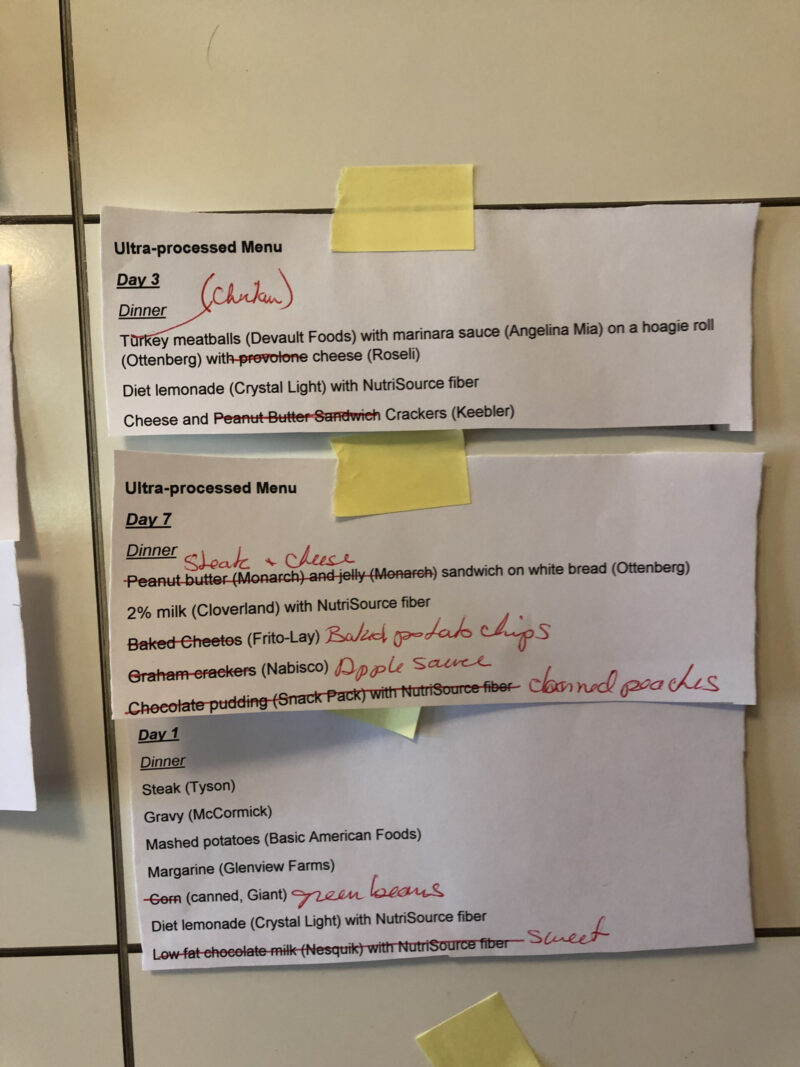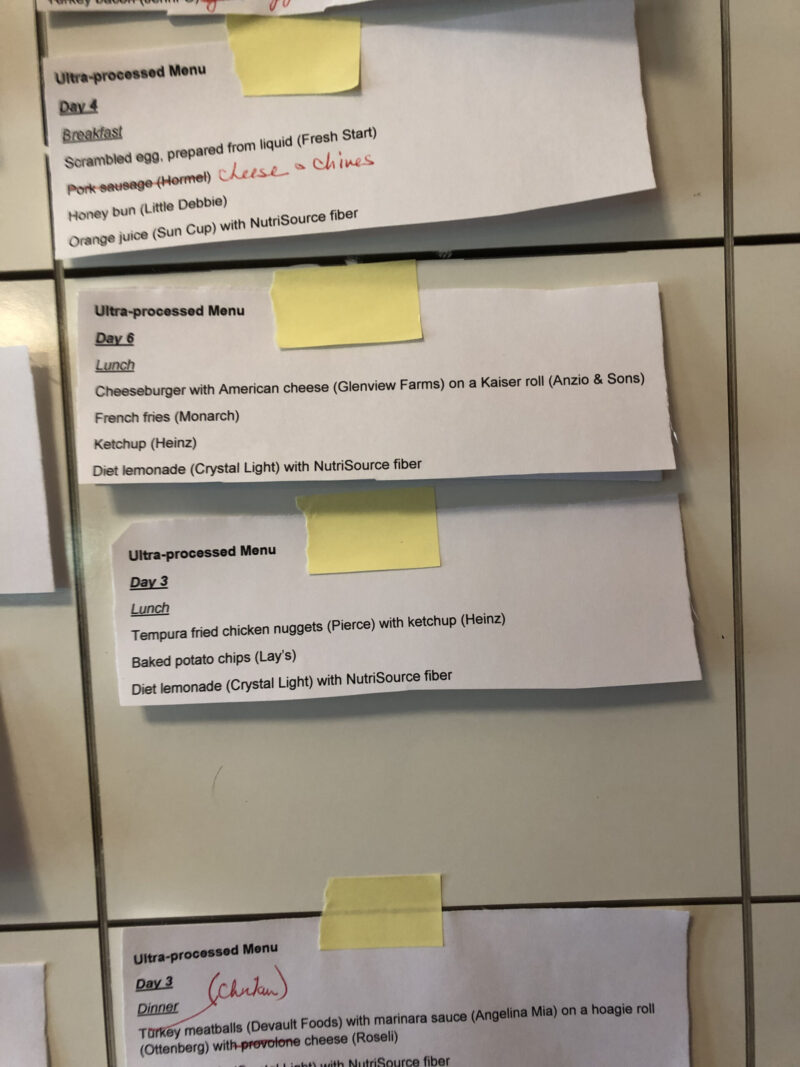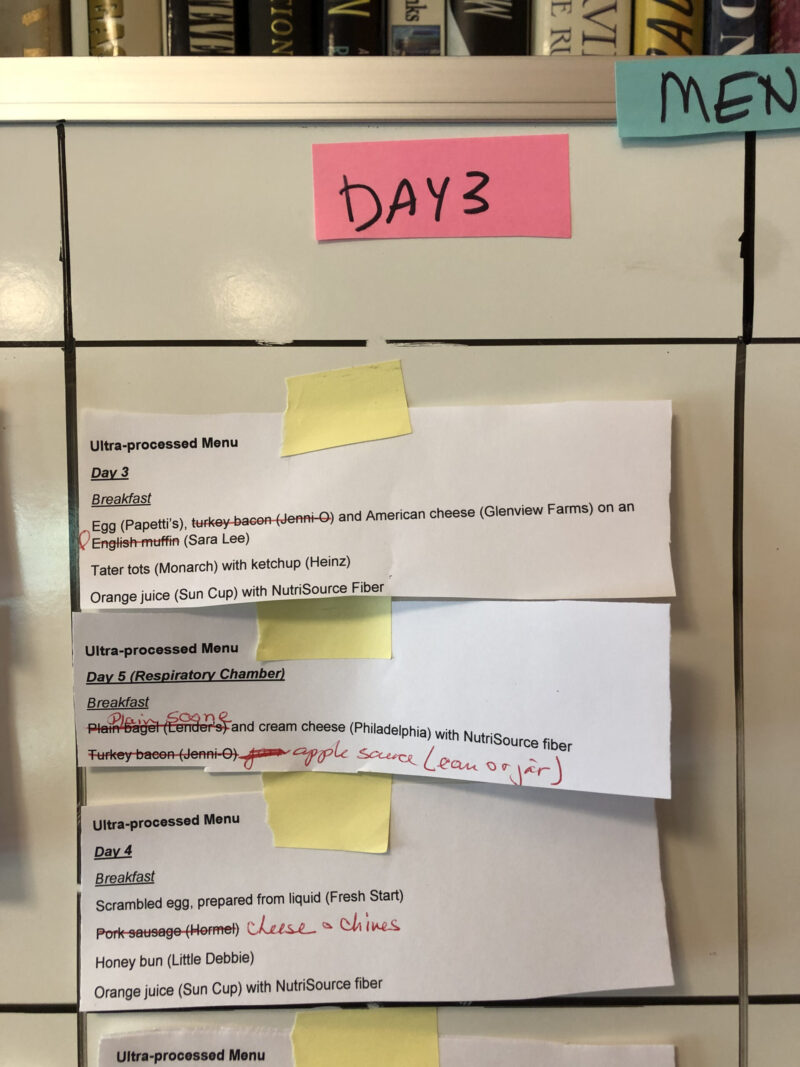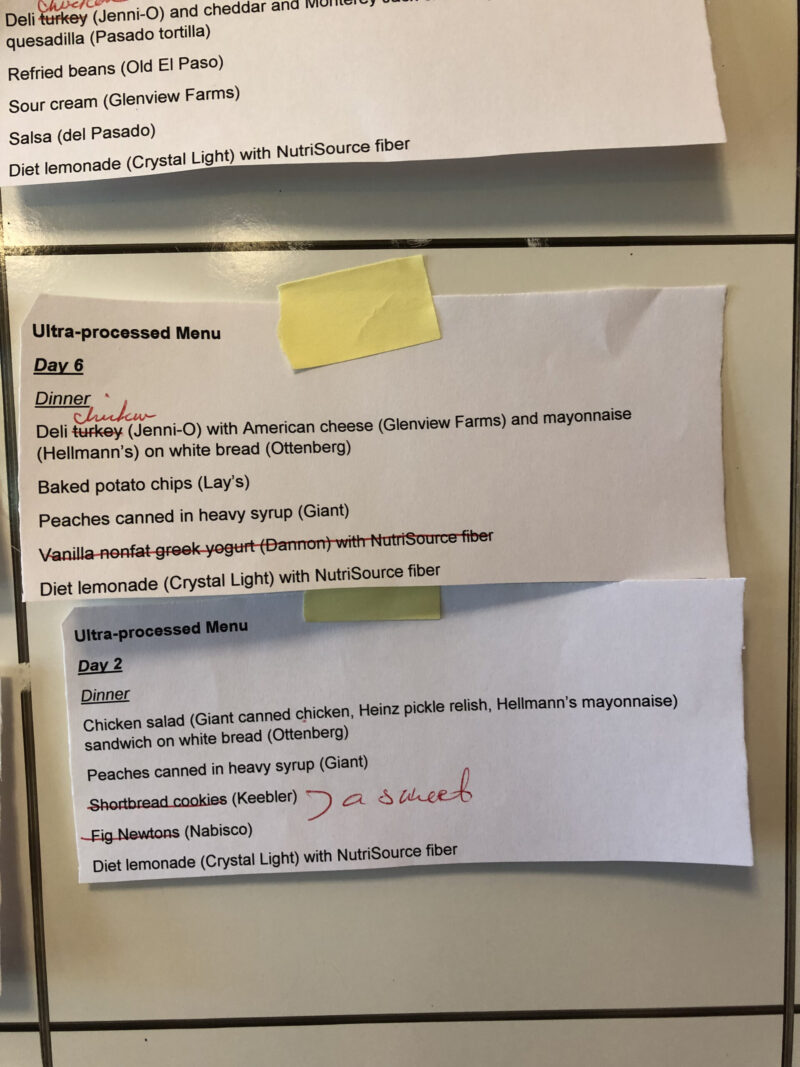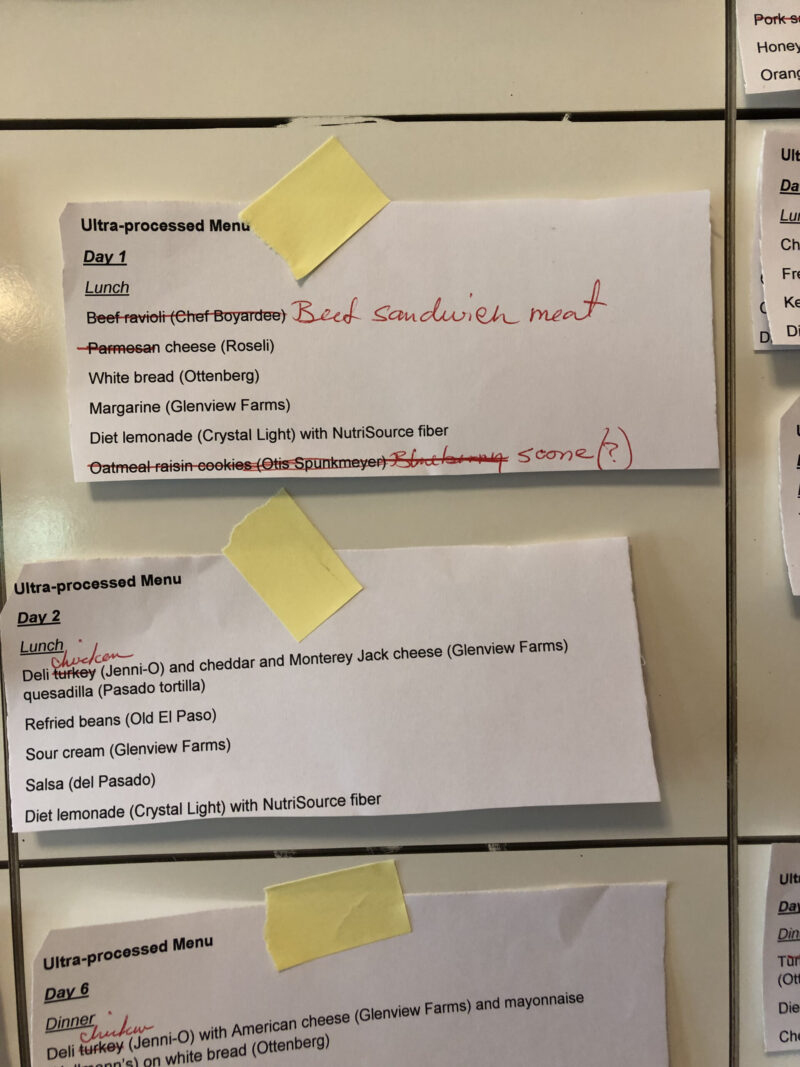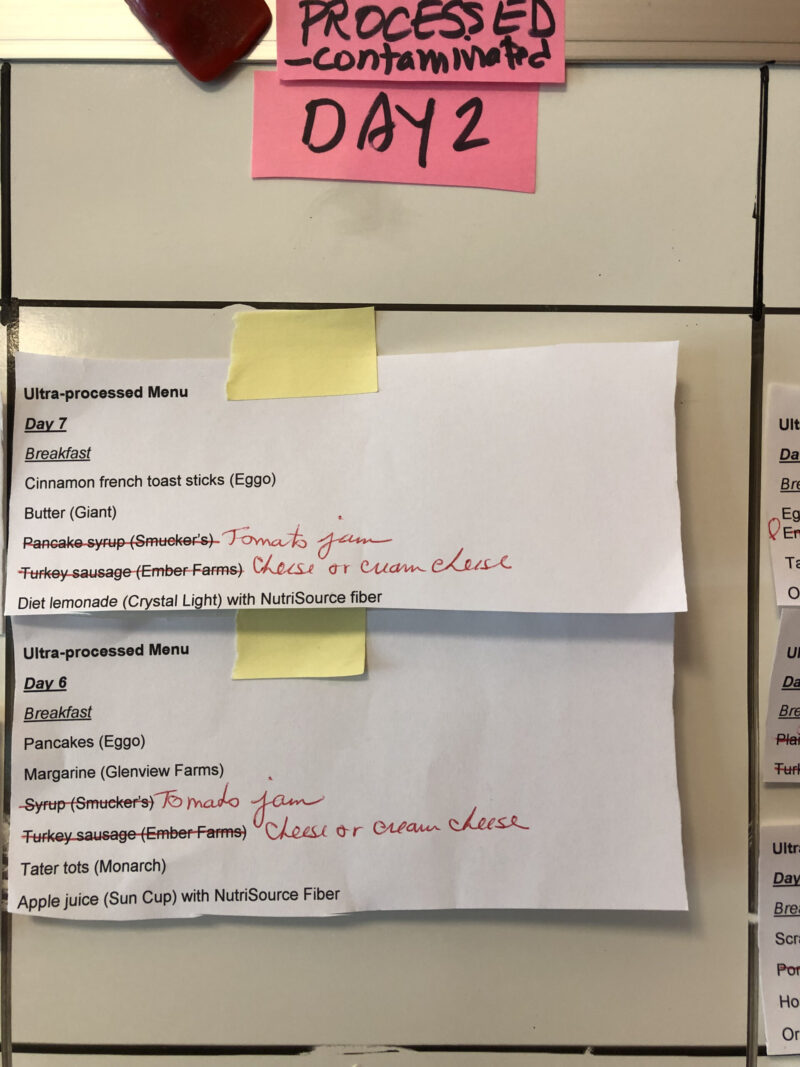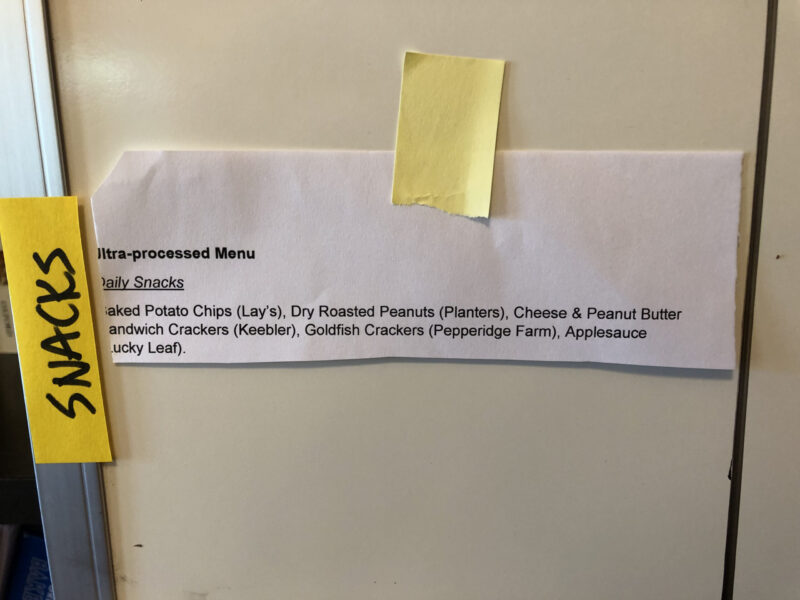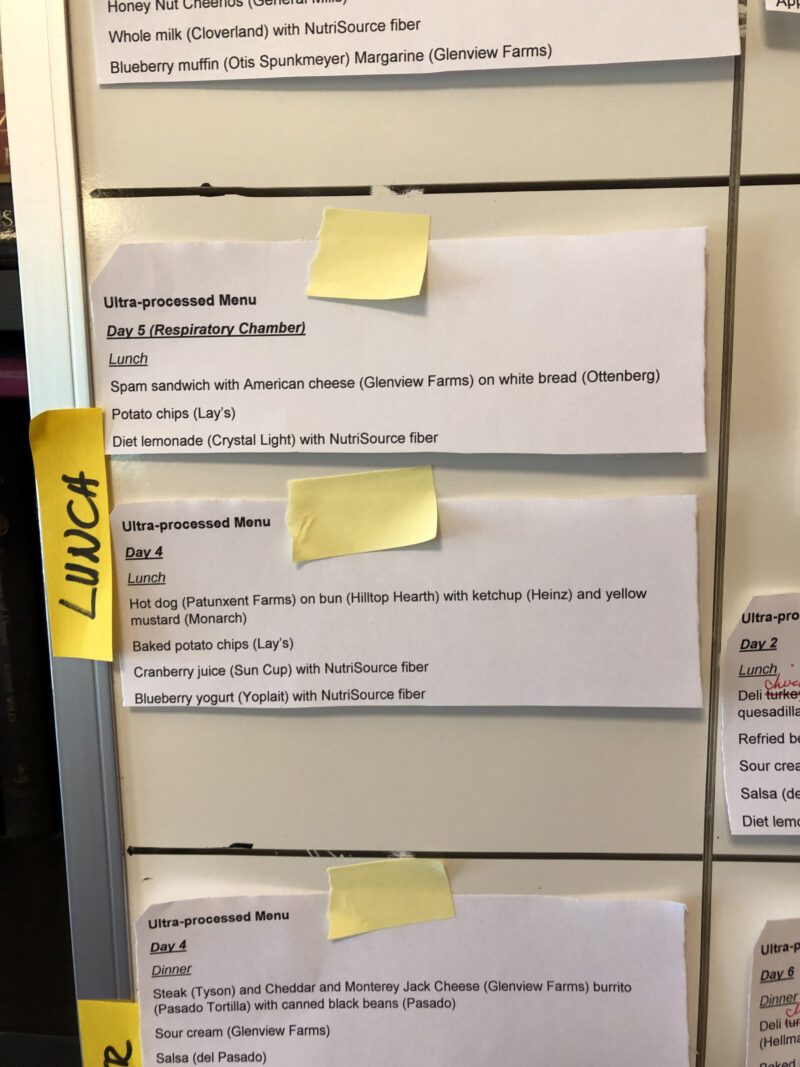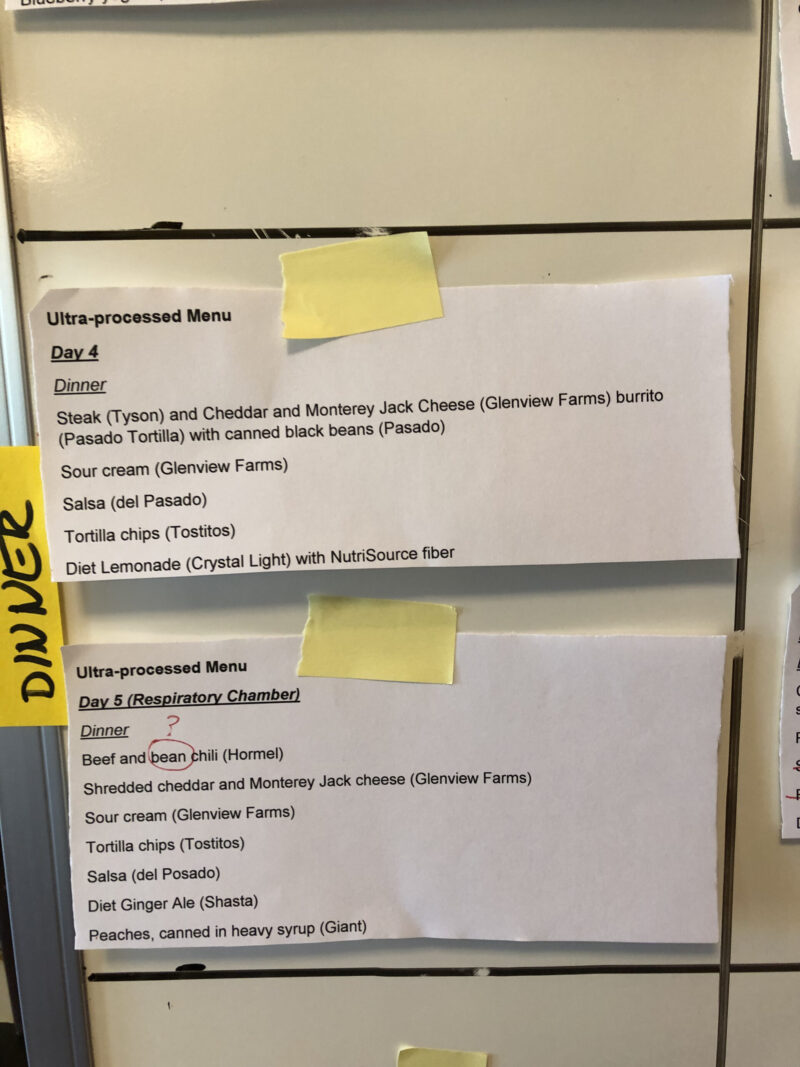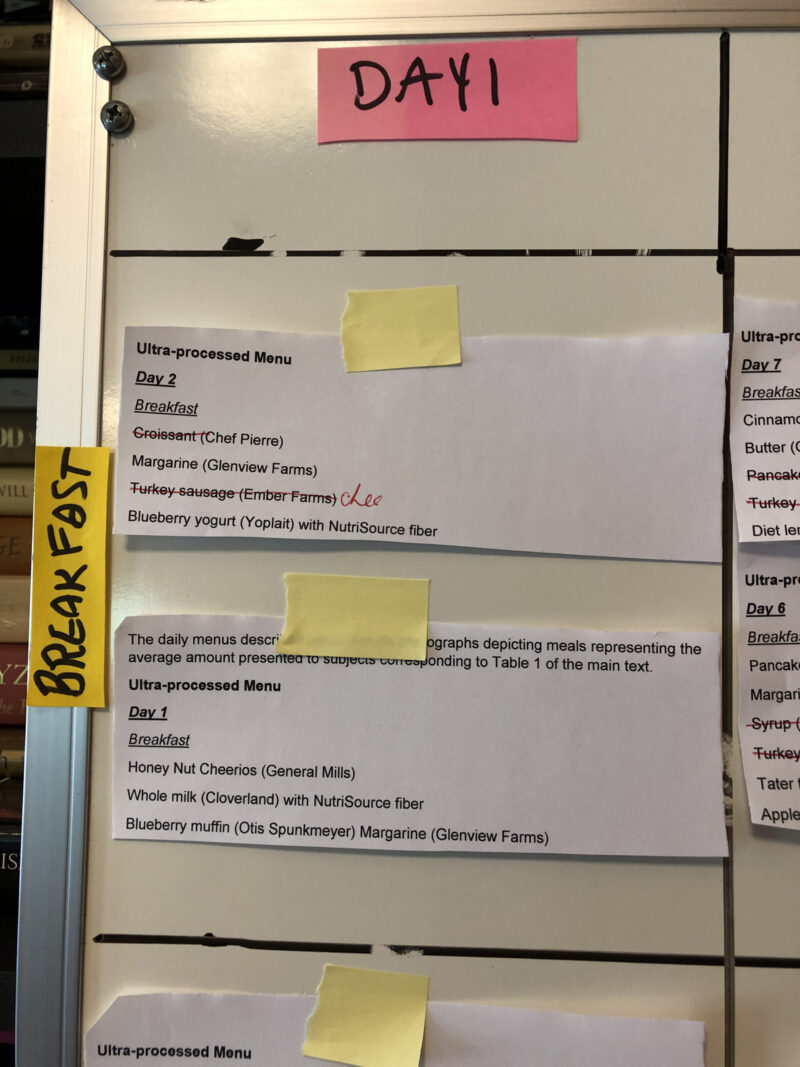In early July 2019, we were brainstorming our final menu planning and decided to see if we could replicate the results of a major NIH study focused on ultra processes foods: “Ultra-processed diets cause excess calorie intake and weight gain: An inpatient randomized controlled trial of ad libitum food intake.”
This ad-free article is made possible by the financial support of the
Center for Research on Environmental Chemicals in Humans: a 501(c)(3) non-profit.
Please consider making a tax-deductible donation for continued biomedical research.
A supplement to that NIH study included the menus they used for theiur study, so we decided to see if we could base our menu on theirs. Because the NIH study was two weeks and ours was six days (focused on plastic derived chemicals which are always found in ultra-processed foods) we decided to choose items from the ultra-processed leg of the NIH study and adapt them for days 1-3 of our study menu. Those same recipes would be used for the second leg of our study using items where ingredients were as free as possible from plastic contaminants.
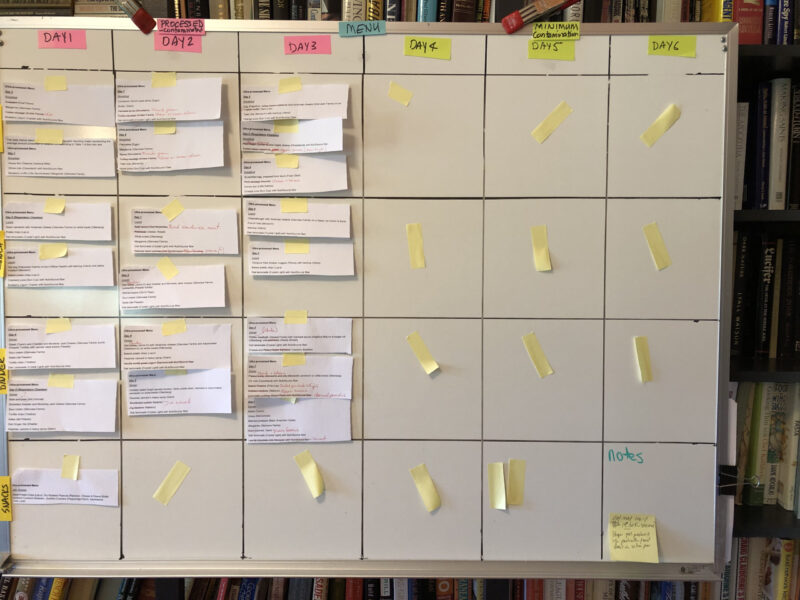
This is a first pass at creating the study menu.
For the reduced plastic chemical leg of our study, we undertook to reverse engineer the items in the first three-days using the least-possible contaminated foods from known replicable sources. We then developed methods and recipes that used extraordinary methods we developed to further reduce possible plastic contamination. Those techniques are described in the “Best Practices” articles on this site.
Extensive work underpinning those Best Practices can be found at this link.
NIH errors made menu replication impossible
Our attempts to replicate the NIH study menu were abandoned in large part because a large number of the supposedly UN-processed food in the NIH menu were contaminated both with plastic-derived chemicals and with food processing additives and processes.
The NIH study used pre-prepared foods — many highly processed — and did not have an accurate (or even knowable) food composition. This was obviously as prime reason the NIH investigators never responded to our requests for recipes.
They had no recipes and were unaware of the actual composition — or contamination level — of the foods in either leg of their study. This is the same as a chemist working with compounds of unknown composition. And that a major violation of accepted fundamentals of experimental design and practice.
Initial menu brainstorming
The formal text in the illustrations below are taken from the menu supplement to the NIH study. The hand-written notes are a first pass of brain storming about the recipes we would create for both legs of our study.
